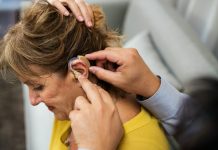
Feeling anxious about health, family or money is normal for most people—especially during the COVID-19 pandemic.
But for those with anxiety disorders, these everyday worries tend to heighten even when there is little or no reason to be concerned.
In a new study from Indiana University, researchers examined how biological factors impact anxiety disorders, specifically in females.
They found that anxiety in females intensifies when there’s a specific, life-relevant condition.
Anxiety disorders occur twice as often in women than men, and social and cultural factors likely play an important role in the development of anxiety in females.
The COVID-19 pandemic heavily influenced anxiety in people.
According to the Centers for Disease Control and Prevention, in June 2020—a few months into the pandemic—13% of Americans started using or increasing substance use to cope with their emotions and stress due to the unknowns at that time about the pandemic.
Knowing that women have more incidence of anxiety than men, the team says the roles for many women have amplified during the pandemic—working remotely, teaching children in virtual school, everyday tasks, errands.
These life-relevant conditions could have increased their anxiety.
In the study, the team focused on biological factors, which play an important role in these types of mood disorders.
Through studying both male and female rodent models, they found that females and males were very different in their responses to the most life-relevant aspects related to anxiety.
In one of the behavioral tasks that induce anxiety, female rats took longer to touch the food and ate less food relative to males.
The researchers also gave the rodents diazepam—a drug used to treat anxiety—and it greatly reduced anxiety in females, but it had little effect in males when interacting with food.
There were also other measures that showed similarities between males and females, including how many times a rat approached the lit center and how long it remained there. Thus, only the parts of the task that were most life-relevant—in this case food—showed sex differences.
Previous studies support the idea that anxiety in females is focused on the most life-relevant aspects of a situation, which aligned with their findings.
The team says knowing that anxiety can manifest from different concerns in males and females, with females particularly attuned to the most life-relevant conditions, is a valuable step towards seeking better treatments based on sex differences.
If you care about anxiety, please read studies about popular sleep and anxiety drug may cause addiction and findings of new nasal spray can treat anxiety disorders.
For more information about anxiety and depression, please see recent studies about world’s first test to accurately predict depression and bipolar disorder and results showing that your gut health may be linked to high blood pressure and depression.
The study is published in Psychopharmacology. One author of the study is Thatiane De Oliveira Sergio, Ph.D.
Copyright © 2021 Knowridge Science Report. All rights reserved.



